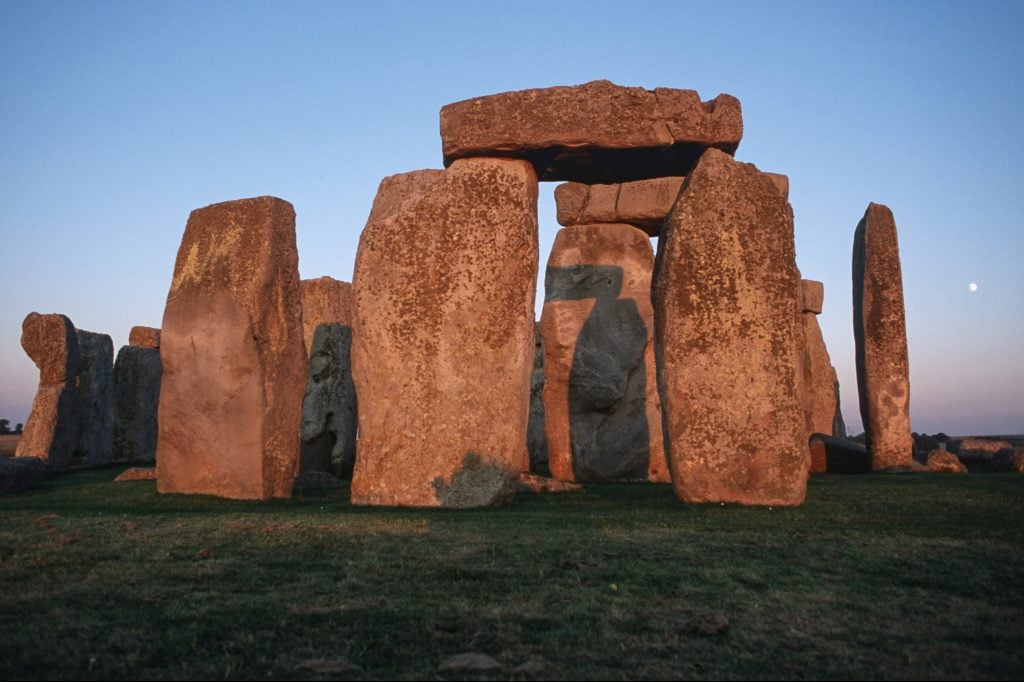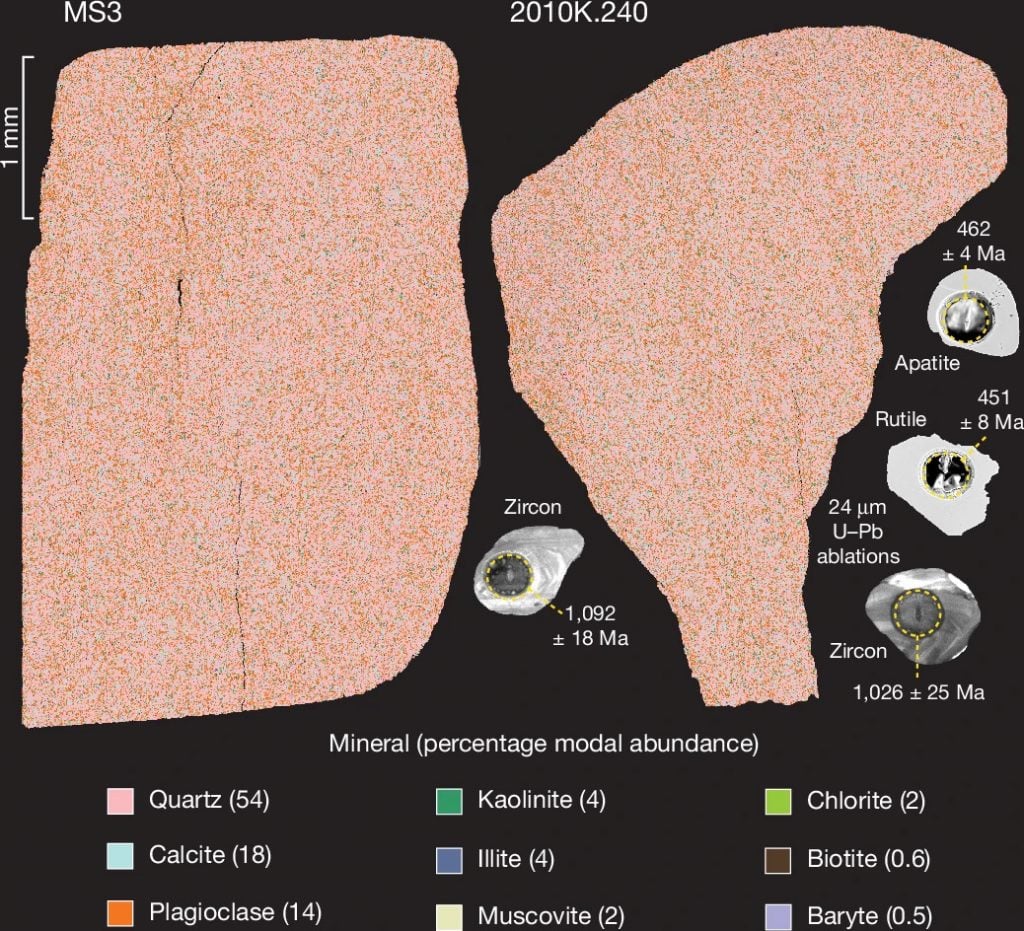Archaeology & History
New Findings Complicate the Origins of Stonehenge’s Megalith
Prehistoric humans dragged one of Stonehenge's giant slabs across an even bigger distance than previously thought.

Prehistoric humans dragged one of Stonehenge's giant slabs across an even bigger distance than previously thought.

Tim Brinkhof

For decades, archaeologists believed that the stones that make up Stonehenge originated from Wales. If the notion that prehistoric people somehow dragged these boulders 125 miles of English countryside was puzzling before, it’s even more puzzling now.
That’s because a new study published in Nature on August 14 shows that one of these stones didn’t come from Wales at all, but a corner of northeast Scotland 466 miles away from Salisbury Plain.
The stone in question—the so-called Altar Stone—isn’t one of the trilithons, the five 29 to 32 feet tall, 45-ton boulders that make up the bulk of Stonehenge’s imposing silhouette. Still, it’s pretty big, standing 16 feet tall and weighing six tons, and unlike the trilithons—which are believed to have been found a measly 16 miles away from their current place—it came from all the way across the country.
“It completely rewrites the relationships between the Neolithic populations of the whole of the British Isles,” Rob Ixer, one of the study’s co-authors, told the Guardian, adding that the science behind their work is going to be “discussed for decades to come.”
Speaking of science, the study attempted something that, surprisingly, hadn’t been tried before: comparing the chemical composition of Stonehenge’s Altar Stone to that of rocks across the Isles.

Mineralogy maps from thin sections of the Altar Stone. Photo: https://doi.org/10.1038/s41586-024-07652-1.
“With that age fingerprint,” co-author Nick Pearce told the Guardian, “you can match it to the same sort of rocks around the U.K.—and the match for the age fingerprint was a dead ringer for the Orcadian Basin in north-east Scotland.”
With one mystery solved, another endures—grows, even. We now know where Stonehenge’s Altar Stone originally came from, but have no idea how it got to where it is today. If anything, its distant place of origin makes the work of Stonehenge’s prehistoric builders even more puzzling.
In this regard, the authors of the study can do nothing but speculate. “We posit that the Stonehenge Altar Stone was anthropogenically transported to Stonehenge from northeast Scotland,” they wrote, “anthropogenically” meaning, simply, the work of human beings.
“Even with assistance from beasts of burden,” they added, “rivers, and topographical barriers, including the Grampians, Southern Uplands and the Pennines, along with the heavily forested landscape of prehistoric Britain, would have posed formidable obstacles for overland megalith transportation.”
However, Mike Pitts, a journalist and archaeologist uninvolved with the study, rejected the idea that the Altar Stone was transported by boat. “If you put a stone on a boat out to sea, not only do you risk losing the stone—but also nobody can see it,” he told the Guardian. Transporting the stone over land, Stonehenge’s builders might have encountered people willing to assist them.
The study’s authors stress that their methodology leaves little room for controversy, with the margin of error being “fractions of a percent.”